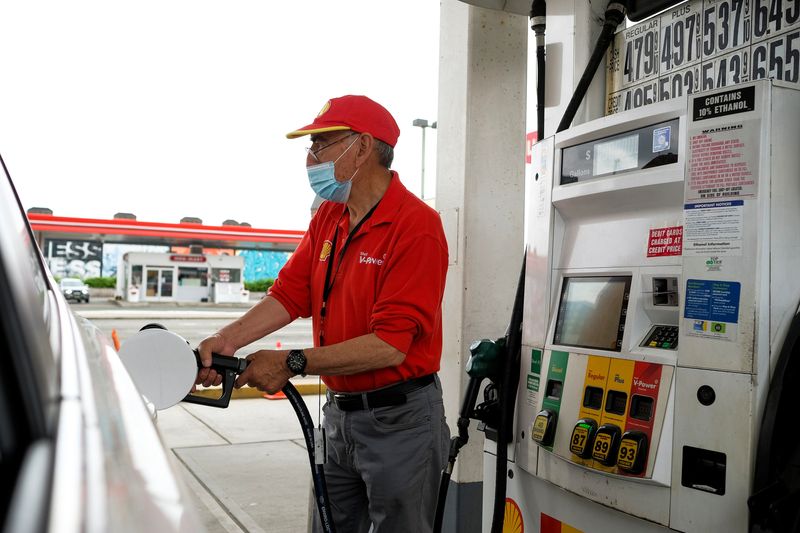
© Reuters. FILE PHOTO: A worker fills up a car with gas outside the Holland Tunnel at the start of the Memorial Day weekend, under rising gas prices and record inflation, in Newport, New Jersey, U.S., May 27, 2022. REUTERS/Eduardo Munoz
LCO
+0.55%
Add to/Remove from Watchlist
Add to Watchlist
Add Position
Position added successfully to:
Please name your holdings portfolio
Type:
BUY
SELL
Date:
Amount:
Price
Point Value:
Leverage:
1:1
1:10
1:25
1:50
1:100
1:200
1:400
1:500
1:1000
Commission:
Create New Watchlist
Create
Create a new holdings portfolio
Add
Create
+ Add another position
Close
CL
+0.57%
Add to/Remove from Watchlist
Add to Watchlist
Add Position
Position added successfully to:
Please name your holdings portfolio
Type:
BUY
SELL
Date:
Amount:
Price
Point Value:
Leverage:
1:1
1:10
1:25
1:50
1:100
1:200
1:400
1:500
1:1000
Commission:
Create New Watchlist
Create
Create a new holdings portfolio
Add
Create
+ Add another position
Close
By Laura Sanicola
(Reuters) – Oil prices rose in early Asian trade on Thursday after strong demand for fuels in the U.S. outweighed concerns about the possibility of the world’s biggest oil producer and consumer defaulting on its debt.
Brent crude futures rose by 26 cents, or 0.34%, to $76.67 a barrel by 0015 GMT. U.S. crude futures rose 28 cents to $72.84.
Latest U.S. data showed consumer prices rose in April, increasing the likelihood that the Federal Reserve will maintain higher interest rates which can have the knock-on effect of reducing oil demand. Rising global interest rates have weighed on oil prices in recent months, with traders concerned about recession.
However, fuel demand in the U.S. is showing signs of strength.
U.S. gasoline inventories fell by 3.2 million barrels last week, much more than the 1.2 million barrel draw forecast by analysts. Distillate stocks also declined, data from the U.S. Energy Information Administration showed on Wednesday. [EIA/S]
U.S. jet fuel demand rose to its highest level since December 2019.
Meanwhile, detailed talks on raising the U.S. government’s $31.4 trillion debt ceiling kicked off on Wednesday with Republicans continuing to insist on spending cuts.
The standoff has rattled investors, sending the cost of insuring exposure to U.S. government debt to record highs, as Wall Street grows more concerned about the risk of an unprecedented default.
Source: Investing.com



























